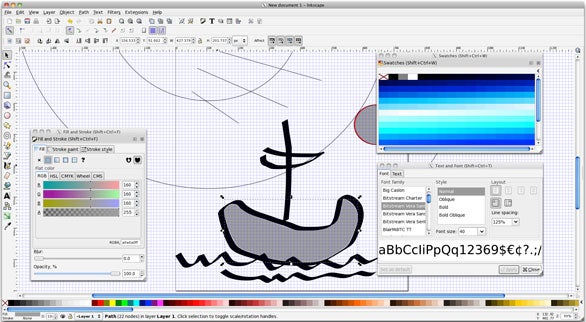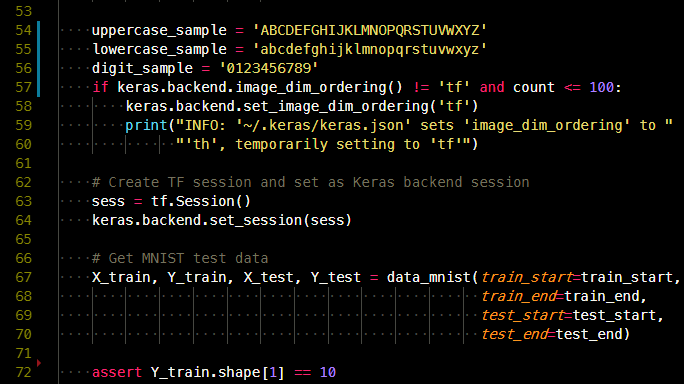Knowing which Apps or Processes are running on your Mac is important, because some of these Apps could be slowing down your Mac. You will find below 4 different ways to show All the Running Apps and Processes on your Mac. Vmware view horizon client for mac.
Standard Shipping is always complimentary on MAC Gift Cards. No offer code necessary. Shipping offer not applicable to Pro members. Place order prior to 3:00 PM EST for same day processing. Please note, due to the volume of orders, processing may take 1-3 business days.For details on free returns, click here. Just about any language you use today will have bindings for native gui toolkits. Most of them will have bindings or bridges for cross platform toolkits as well. Python, ruby, java, c, c, etc - gtk, qt, wxwidgets the list goes on. The best products start with Sketch. Create, prototype, collaborate, and bring your ideas to life with the design platform used by over one million people —.
Why to See All Running Apps and Processes on Mac

Mac Vs Windows For Programming
In case you are coming from a Windows computer, you must be used to opening the Task Manager on your Windows computer, in order to take a look at all the running apps and processes on your computer.
In the case of a Mac, there are multiple ways to see all the Running Apps and Programs, ranging from the simple option of using the Dock to using the Terminal command.
In general, the purpose of taking a look at All the Running Apps and Programs on your Mac is to get an idea of which programs are actively running on your Mac, what resources they are using and also to rule out the possibility of any unnecessary programs running in the background and using up resources on your computer.
Show All Running Apps and Processes On Mac Using the Activity Monitor on Mac
Activity Monitor can be described as the Mac equivalent of a Task Manager in a Windows computer. The Activity Monitor provides a very good view of the App and processes running on your Mac and the amount of resources being uses by these Apps and Processes.
1. Click on the Finder icon located in the left corner of the Dock (See image below)
2. On the next screen, click on Applications in the left sidebar menu and then click on the Utilities folder.
3. In the Utilities folder, click on Activity Monitor which should be the first item in Utilities Folder (See image below)
4. Once Activity Monitor opens, you will be able see a list of All the Processes or Applications currently running on your Mac (See image below)
As you can see in the above image, there are 5 different tabs in the Activity Monitor -> CPU, Memory, Energy, Disk and Network.
Clicking on each tab will show you more details, for example, clicking on the Memory Tab will show you how much memory each process is using. Similarly, clicking on the CPU tab will show you the amount of CPU being used by each of these Apps and Processes running on your Mac.
5. To view more info about a specific Process or Application, simply click on the Application/Process and then click on the i icon button located at the top left Corner of the screen (See image below).

6. To force quit an application or process through Activity Monitor, simply click on the application you would like to force quit and then click on the x button, located at the top left side of your screen (See image below)
Show All Running Apps On Mac Using Force Quit Applications Manager
Another method to check all the Running apps and programs on your Mac is through the Force Quit applications manager on Mac.
Email programs for mac. If Microsoft is your email provider of choice, it should be well up your list.Hiri is available to buy annually or via a lifetime license for one-time fee. Most of the screen is devoted to your inbox, with a minimum of toolbar and other clutter. It includes a smart dashboard that lets you see how many unread messages you have at a glance and how long you should wait before checking them (after all, how many really need an instant reply?)The Compose window is designed to save you time too, offering only the essential options (no fancy formatting) and including the subject line at the bottom so you don't have to write it until you know how to summarize the message.These little touches make Hiri a truly exceptional client. Paid plan isn’t as cheap as someFirst released back in 2004, Google's has become the market leader in free email services with more than a billion users across the globe.Gmail's stripped-back web interface is a highlight. Both options offer a 7-day free trial.(Image credit: Shutterstock) Best free email clients.
1. Click on the Apple icon in the top menu bar of your Mac and then click on Force Quit Application in the drop-down menu (See image below).
2. This will open the Force Quit Applications manager which will show you all running apps on your Mac
3. To force quit one of these applications, simply click on the application from the list and click on the Force Quit button.
Show Running Apps and Processes On Mac using the Terminal Command
The Terminal also shows you a detailed view of which applications and processes are running on your Mac, along with the percentage of CPU used by each of these applications/processes.
1. To open Terminal on your Mac, do a spotlight search for the Terminal by pressing the Command + Space keys on your Mac keyboard and searching for Terminal in Spotlight Search. (See image below)
2. Next double click on the Terminal option or press the enter key on your Mac’s keyboard to open up Terminal
3. In the terminal type in top –o cpu and press the enter key on your keyboard
This will show you a list of all running apps and processes with the apps consuming the most CPU at the top of the list.
4. To reorganize this list close the Terminal and reopen it. Once Terminal reopens type in top –o rsize and press the enter key on your keyboard.
Now applications or processes which are using the most memory will be listed at the top of the list and the application or processes using the least memory will be listed at the bottom of the list.
Show Running Apps Through Dock
The easiest way to view running apps on your Mac is by simply taking a look at your dock.
All running applications will have a black dot underneath the applications icon (See image below)
While this method is easy to follow, it sometimes will not show you all apps running in the background and does not even show you which processes are running in the background.
This method also does not give you much detail, like how much memory each application is using or how much CPU is being used by each application.
This document is the starting point for learning how to create Mac apps. It contains fundamental information about the OS X environment and how your apps interact with that environment. It also contains important information about the architecture of Mac apps and tips for designing key parts of your app.
At a Glance
Cocoa is the application environment that unlocks the full power of OS X. Cocoa provides APIs, libraries, and runtimes that help you create fast, exciting apps that automatically inherit the beautiful look and feel of OS X, as well as standard behaviors users expect.
Cocoa Helps You Create Great Apps for OS X
You write apps for OS X using Cocoa, which provides a significant amount of infrastructure for your program. Fundamental design patterns are used throughout Cocoa to enable your app to interface seamlessly with subsystem frameworks, and core application objects provide key behaviors to support simplicity and extensibility in app architecture. Key parts of the Cocoa environment are designed particularly to support ease of use, one of the most important aspects of successful Mac apps. Many apps should adopt iCloud to provide a more coherent user experience by eliminating the need to synchronize data explicitly between devices.
Relevant Chapters:The Mac Application Environment, The Core App Design, and Integrating iCloud Support Into Your App
Common Behaviors Make Apps Complete
During the design phase of creating your app, you need to think about how to implement certain features that users expect in well-formed Mac apps. Integrating these features into your app architecture can have an impact on the user experience: accessibility, preferences, Spotlight, services, resolution independence, fast user switching, and the Dock. Enabling your app to assume full-screen mode, taking over the entire screen, provides users with a more immersive, cinematic experience and enables them to concentrate fully on their content without distractions.

Relevant Chapters:Supporting Common App Behaviors and Implementing the Full-Screen Experience Winrar for mac.
Get It Right: Meet System and App Store Requirements
Best Applications For Mac

Programming Application For Mac High Sierra
Configuring your app properly is an important part of the development process. Mac apps use a structured directory called a bundle to manage their code and resource files. And although most of the files are custom and exist to support your app, some are required by the system or the App Store and must be configured properly. The application bundle also contains the resources you need to provide to internationalize your app to support multiple languages.
Finish Your App with Performance Tuning
As you develop your app and your project code stabilizes, you can begin performance tuning. Of course, you want your app to launch and respond to the user’s commands as quickly as possible. A responsive app fits easily into the user’s workflow and gives an impression of being well crafted. You can improve the performance of your app by speeding up launch time and decreasing your app’s code footprint.
C Programming Application For Mac
Relevant Chapter:Tuning for Performance and Responsiveness
How to Use This Document
This guide introduces you to the most important technologies that go into writing an app. In this guide you will see the whole landscape of what's needed to write one. That is, this guide shows you all the 'pieces' you need and how they fit together. There are important aspects of app design that this guide does not cover, such as user interface design. However, this guide includes many links to other documents that provide details about the technologies it introduces, as well as links to tutorials that provide a hands-on approach.
Programming Application For Mac Catalina
In addition, this guide emphasizes certain technologies introduced in OS X v10.7, which provide essential capabilities that set your app apart from older ones and give it remarkable ease of use, bringing some of the best features from iOS to OS X.
Software Application Programming
See Also
The following documents provide additional information about designing Mac apps, as well as more details about topics covered in this document:
To work through a tutorial showing you how to create a Cocoa app, see Start Developing Mac Apps Today.
For information about user interface design enabling you to create effective apps using OS X, see OS X Human Interface Guidelines.
To understand how to create an explicit app ID, create provisioning profiles, and enable the correct entitlements for your application, so you can sell your application through the Mac App Store or use iCloud storage, see App Distribution Guide.
For a general survey of OS X technologies, see Mac Technology Overview.
To understand how to implement a document-based app, see Document-Based App Programming Guide for Mac.
Copyright © 2015 Apple Inc. All Rights Reserved. Terms of Use | Privacy Policy | Updated: 2015-03-09
